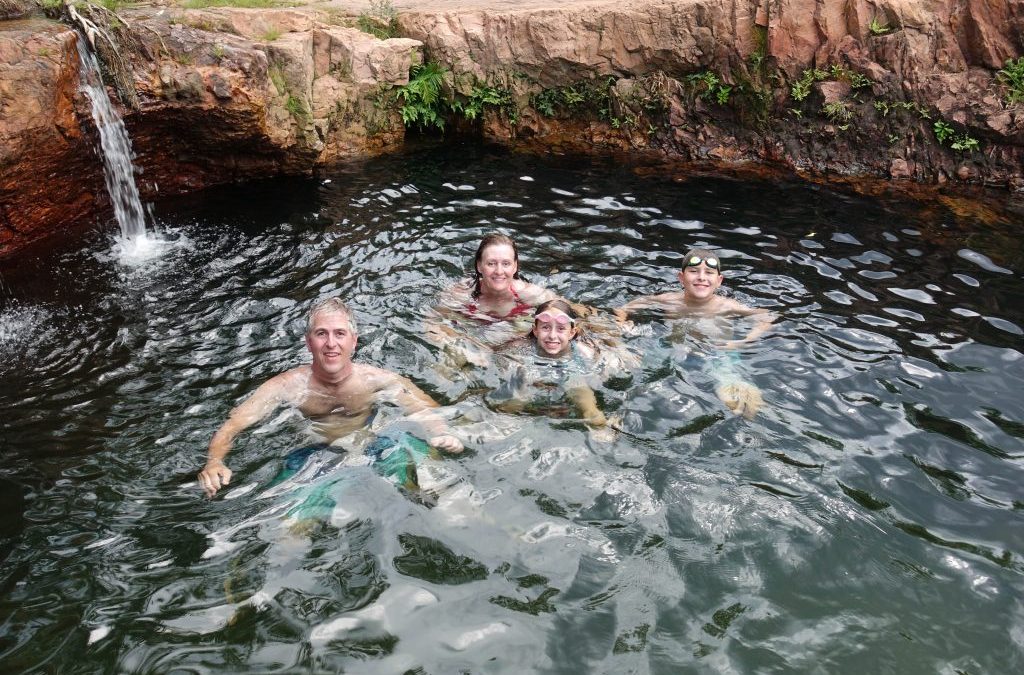
by Alex Bowles | Dec 1, 2017 | Alex, Australia
Australia is amazing! There are so many fun things to do here that I would do again on short notice. The first fun thing we did was climb the Sydney Harbor Bridge. It was nice because when up there you could see for miles and see the Sydney skyline from a different perspective. The next fun thing we did which was my favorite was diving the Great Barrier Reef. It was so amazing seeing all the fish and the huge and small turtles swimming in and around the colorful reef. Next, we took a helicopter tour of Uluru and Kata Tjuta and sunset. It was amazing because from up there you can see the colors of the rock in a way that you can’t get from looking up from the ground. Finally, to end the trip to Australia with something to remember, we swam in the numerous waterholes of Litchfield National Park. The swimming holes were filled with crystal clear water and numerous fish. Australia has many more fun things to do that we couldn’t do because I wasn’t old enough. Two that I really wanted to do were skydiving Uluru and swimming with crocodiles in The Cage of Death. Maybe next time when I am a little older.
Another interesting thing about Australia is the food they eat. Because Australia has many unique animals they have a very unique menu. One item which you can find at every breakfast buffet is the terrible substance known as Vegemite. It has the consistency of butter, the color of motor oil and tastes like &!@#$. If you ever try it have a gallon of water to wash away the taste. My favorite thing on the menu was kangaroo, it tastes like beef not chicken. There are many ways to prepare kangaroo including but not limited to, kangaroo burgers, kangaroo loin, kangaroo steak and kangaroo jerky. I have tried the first two options and am planning on taking the final option home with me. Other animals that were on the menu that I didn’t have the time to try were emu drumsticks, Asian water buffalo steak, camel hump and crocodile tail.
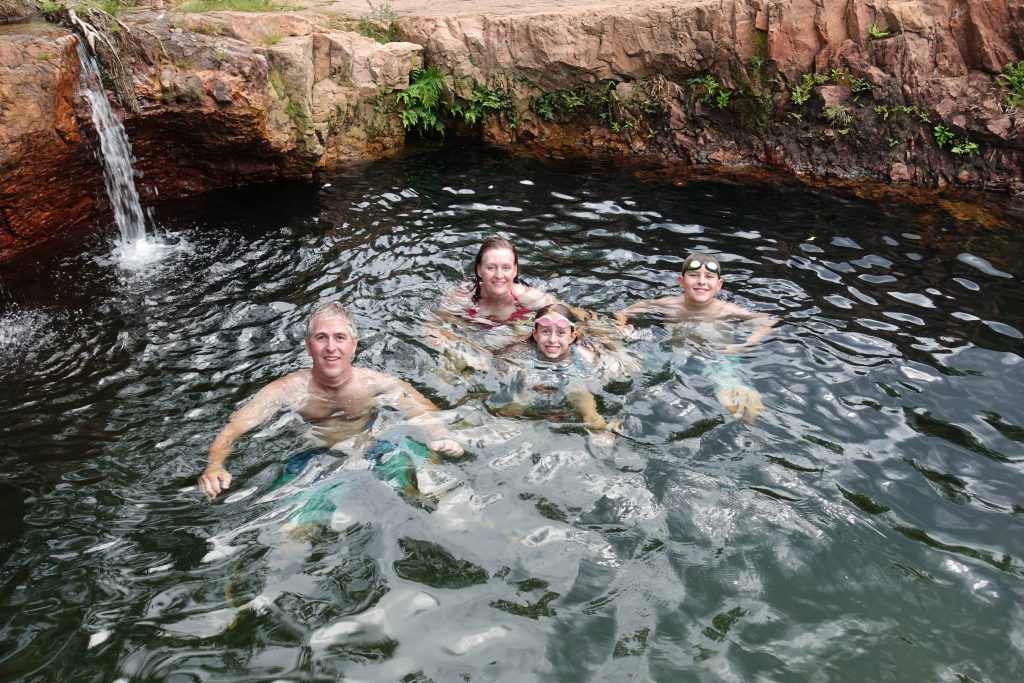

by Maile Bowles | Dec 1, 2017 | Australia, Maile
After hanging at the beach we went to Uluru, the biggest rock in the world. It is in the middle of the desert known as the Australian Outback. As you can guess, it was hot! It was way hotter than my hometown of St. George, and it was only Spring. It felt like 1,000,000,000,000,000,000°F! Turns out it was only 102°F. Since it was so hot, they advised people to finish their hiking before 11 a.m. or you could die of heat exhaustion. Anyway, two-thirds of Uluru is underground! The part which is above the ground is as tall as the Eifel Tower! My family and I got to bike around it. Our hotel room there was three stories tall!
Next, we went to Kings Canyon. Basically, all we did was go on a mini hike and saw many wild camels and a wild dingo! The dingo looked like a doggy.
After seeing the doggy, we to Alice Springs. While there, we bought some Aboriginal paintings. Also, there was a wicked storm that within the first five minutes caused the streets to flood. My dad and I were totally soaked just running across a street to join mom and Alex. The storm also knocked down tree branches of giant and sturdy trees.
Then we went to Darwin. From there we rented a 4-wheel drive and drove to Kakadu National Park. We went on a boat cruise on a billabong and the Alligator River. We saw many birds, including some baby birds whose nickname was “Jesus-walkers” because it looks like they are walking on water. Actually, they have big feet and are walking on lily pads. Then we went to Litchfield National Park. In Litchfield, we went swimming in pools and waterfalls. I almost drowned because the current was wearing me out.
Now we are getting ready to travel to Wakatobi where we will have our own personal pool and a 24/7 butler. Wakatobi is in Indonesia. We were supposed to go through Bali to get there faster, but a lot of volcanic ash is in the air and the airport is closed. We are trying to get there any way we can. Today we will fly to Singapore and then Jakarta. From there it will still take at least two more flights and a boat ride to get there.


by Jason Bowles | Nov 29, 2017 | Australia, Jason
Darwin, Northern Territory—the Top End of Australia. Totally different than the other places we have been so far. Hot, humid, tropical. We came for the parks and the animals. First, Kakadu: a huge park, more than a third of it wetlands. Famous for its birds and crocodiles, and we saw plenty of both. Cruising the South Alligator river (like Heron Island, named in error as there are no alligators in Australia) and the surrounding billabongs, we saw numerous large salt water crocs (they grow up to 5 meters up here!) as well as spectacular bird life.

Kakadu Crocodile
Currently we are in Adelaide River, near Litchfield National Park. Looking for swimming holes today! We are surrounded by wallabies here.
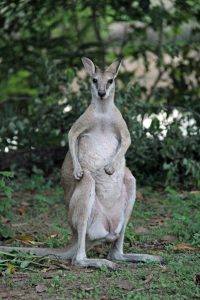
Wallaby in our front yard.
In other news, Gunung Agung is erupting on Bali, the airport has been closed for days and will probably remain so. As we were scheduled to fly to Bali tomorrow, this presents a problem. With tens of thousands of people stranded on Bali and everyone else trying to shuffle flights, it has actually been a very big problem. Fortunately, here in Adelaide River there is internet access–3 kilometers away at the Post Office. After much ado, we have a new plan. Well, part of a plan. We are going to fly to Jakarta on Friday (via Singapore). That is the plan so far (barely even a concept!). From Jakarta we are hoping to fly to Makassar (on Sulawesi, Indonesia). From Makassar, I have heard it is possible to fly to a small place further afield on Sulawesi (Wangi-wangi island) which is only 4 hours by boat from Wakatobi, which is where we would really like to be. Wish us luck!
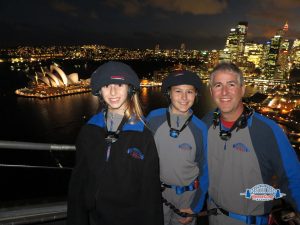
by Maile Bowles | Nov 26, 2017 | Australia, Maile
On this trip, we have had many adventures. We started off in Sydney. We had a fantastic room with an excellent view. We were on the 19th floor and could see the Sydney Opera House and the Sydney Harbor Bridge. My favorite things we did in Sydney were attending a performance of The Merchant of Venice in the Sydney Opera House and climbing the Sydney Harbor Bridge. One fact that I can’t forget is that the color of the bridge is Sydney Harbor Bridge grey-its very own color!

Next, we went to the Blue Mountains. Our room was very funky. The wallpaper, tissue boxes, upholstery, rubbish bin (garbage can), and curtains all had the same design. GROOOOOOOOOOOVEYYYY!!!!!! We went to a Hatted (like Michelin Star) restaurant named Darley’s. I had a salad while Alex had kangaroo–that poor little creature. We were given a little complimentary dish with quail. I didn’t eat it; my dad ate mine. I was sad because I see those little creatures running in our yard at home. They eat strange animals here. The next morning we went on a hike. The Blue Mountains are known for its hikes through the unique jungle. It’s unique because the plants have remained the same since dinosaur times. We got some funny greenscreen photos. My favorite one was with a t-rex. One of the most common animals there was the cockatoo. They were very loud. We saw them flying everywhere which inspired me to get a stuffed animal of one and I named it Tequila. Tequila rides in style. When we were there we rode a scenic train and an aerial tram. The train was the steepest in the world.
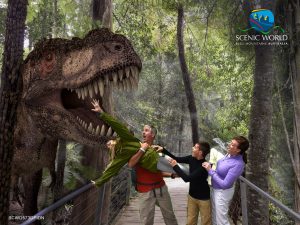
After hanging in the Blue Mountains, we went to the beach. We had to take a two-hour long ferry to get to Heron Island which is on the southern end of the Great Barrier Reef. Heron Island has no herons on it and actually is not an island. It was named for the egrets which look similar to herons. It’s actually a coral cay, not a true island. Heron Island was filled with birds with black feathers and white heads called white-capped noddies. Alex and my mom were pooped on by these naughty birds. (Pun intended) Also, we saw many turtles. It was nesting season for them so we got to watch them crawl up on land and back down into the ocean. Alex and my mom watched a turtle fall in a hole. Also, while there I became a junior ranger. I had a small book I had to fill out in order to get the junior ranger badge. They had multiple badges that you had to get in order to receive the junior ranger badge. I received eleven out of the thirteen badges. The two I didn’t get were unnecessary: a fishing badge and a whale badge which I couldn’t get because it wasn’t whale season. It was really fun.
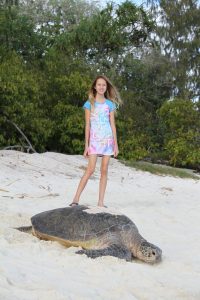

by Jason Bowles | Nov 26, 2017 | Australia, Jason
Iconic. While the word is probably overused, there is no doubt that it applies to Uluru. The only thing that probably surpasses it as the most recognizable landmark in Australia is Sydney’s Opera House. The Opera House is spectacular–perfectly situated on Bennelong point with the Harbor Bridge just beyond–there is no doubt. But if the Opera House is the face of Australia, there is no doubt that Uluru is the heart, figuratively and literally. It is found in the heart of Australia, an area known as the Red Centre. A national park encompasses both Uluru and a neighboring rock formation, Kata Tjuta. Uluru is a massive sandstone monolith that rises 1,142 feet from the desert plain surrounding it. It seems to be the only thing occupying an otherwise featureless plain. Even Kata Tjuta is more than 20 miles away.
From the air and at a distance Uluru impresses with is size and isolation, a monstrous rock protruding with nothing else in sight. To say it dominates the landscape doesn’t do it justice. It IS the landscape. Instantly recognizable. . . Iconic. As you get closer though, Uluru comes alive. We were lucky to arrive after a very wet year and the desert was greener than I would have imagined the Australian Outback to be. Closer yet, pools of water could be found with black-streaking algae cascading down from the heights, like shadows of the waterfalls that created them. Looking even closer, in the shady caves at the base of the monolith, are pictographs telling the stories of the Aboriginal people who have lived here for tens of thousands of years. The traditional owners of Uluru and the surrounding lands, the Anangu, still live here and still use these caves for the ceremonies like their ancestors have for countless generations. Areas of particular significance to the Anangu are not accessible to tourists, and many other areas can be approached but not photographed out of respect for their beliefs and traditions. It wasn’t always like this, but in 1985 the Australian government gave the land back to the Anangu, who in turn leased it back to the government with the stipulation that the park is jointly managed by the Anangu and the Director of National Parks.
I wasn’t sure what to expect, coming to Uluru from southern Utah. Having spent so much time among our wealth of spectacular red rock landscapes, I did not know if it would be slightly less impressive with subconscious comparisons of our rocks to theirs. Not to worry, Uluru exceeded my expectations. From a distance, it is just as spectacular, just as imposing as the classic photos make it out to be. Images fail to capture the evolution of changing colors throughout the day or the lush pockets of life hidden in the various cracks and folds of the rock, or the Anangu culture that surrounds Uluru. Uluru truly is iconic; instantly recognizable, but so much more than a large lump on a desert plain. You really need to appreciate the different perspectives offered as you circle the monument on the base walk, and learn more about the cultural significance of Uluru to the Anangu people from a park ranger on the Mala walk to appreciate what makes Uluru the heart of Australia.

Family photo at sunrise
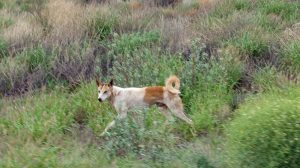
by Alex Bowles | Nov 26, 2017 | Alex, Australia
Australia is home to many interesting animals. The kangaroo, the most iconic Australian animal, lives in the desert and forest and is the largest marsupial. The kangaroo is also a delicacy. I have been eating kangaroo in every form possible and in my opinion it tastes like beef. There is even a species of kangaroo known as the Tree Kangaroo that lives in Indonesia and has been seen to jump off trees 18 meters or 60 feet. The wallaby is a smaller version of a kangaroo that will sometimes breed with kangaroos creating wallaroos. Another iconic animal is the koala. The koala lives on a diet of eucalyptus leaves and sleeps for 18-20 hours of the day. The koala has three fingers and two thumbs to help it climb trees. The most bizarre of Australia’s creatures is the platypus. The platypus is a mammal with a bill like a duck and a tail like a beaver, the platypus is the only mammal to lay eggs. Crocodiles live in the Northern Territory and can live in billabongs (swamps) and the ocean. They normally grow to a length of 6 meters or 20 feet and can jump out of the water to catch food. The cockatoo is a white bird with a yellow crest that can fold off the head. A displayed crest means that the bird is scared or curious to make it seem bigger. The dingo is a relative of the dog that can live in the harshest areas of the Australian Outback. Dingos will mate for life and will sometimes mourn themselves to death after the loss of their mate. Camels are originally from the Middle East but can only be found wild in Australia. The camels are dromedary camels and were imported in the mid-1800’s. People now estimate there are about 1,000,000 wild camels roaming the Outback.
















